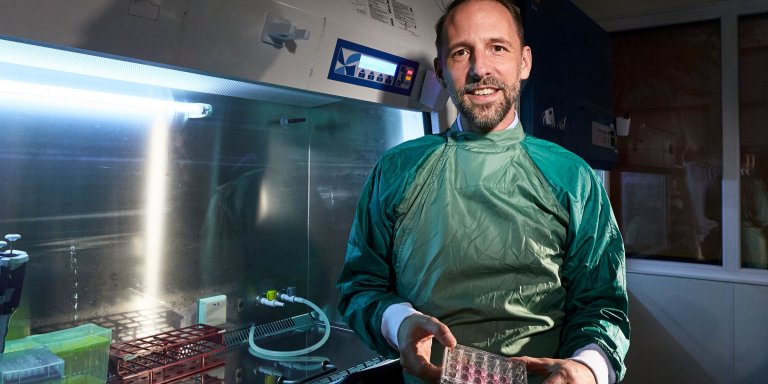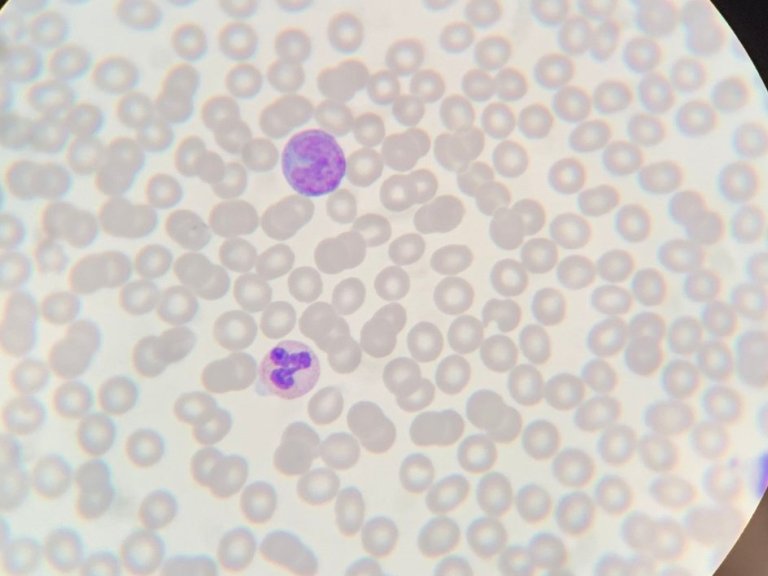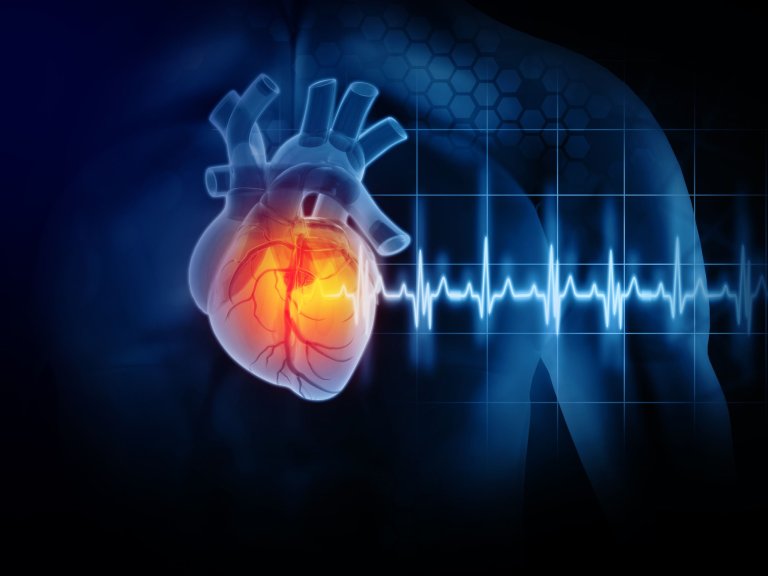"Organoids are all the rage," says Maarten Bijlsma, researcher in the Laboratory of Experimental Molecular Medicine at Amsterdam UMC. "In essence, it comes down to this," Bijlsma explains. "Stem cells from a particular organ, which can therefore grow in many different directions, are put in a test tube together with the right nutrition and the right 'growth factors'. There you grow those cells in a kind of mould of connective tissue. Thanks to that mould, the cells can form a three-dimensional, complex structure, with different essential properties of the organ from which the stem cells were extracted. And so, over time, you get a kind of organ, an organoid."
Not a verbatim copy
As with everything that is 'all the rage', misunderstandings are never far away, Bijlsma warns. "You shouldn't imagine that such an organoid is literally a minuscule copy of a real organ. If you use a stem cell from a heart, so to speak, there is not just a complete heart beating at the bottom of the test tube. An organoid is and remains essentially a cell culture, as we have known it in biology for a long time. But it's a very complex and promising type of cell culture."
In order to avoid mistaken associations, Bijlsma prefers to speak of 'tumouroids' in the case of his own research in the field of cancer therapy. "In our lab, we don't grow copies of organs, but of tumours, from the oesophagus, the pancreas and also from the colon of patients with cancer. We then apply various drugs to those tumouroids to see if they have an effect on the tumour of that particular patient."
While it may take a while before the organoids or tumouroids are used in the clinic, they are already proving useful in the laboratory, Bijlsma emphasises. "They are literally saving the lives of laboratory animals there. Sooner or later, potential new drugs will have to be tested, first on laboratory animals, later also on patients. Of course, this is usually justified, but in some cases, it is sometimes exaggerated," he says.
"There is still too often the traditional reflex among assessors of scientific research that they first want to see a result confirmed 'in vivo', i.e. in a living organism, before they give permission for publication. In some of those cases, an organoid or a tumouroid can be an excellent replacement for a laboratory animal."
But even there appears to be a small catch: a tumouroid is not one hundred percent 'animal-free'. "The mould that we currently use to grow the cells in a three-dimensional structure comes from the tumour tissue of a laboratory animal. But there, one laboratory animal does provide enough tissue to make a multitude of moulds. So, on balance, tumouroids do save the lives of an enormous number of lab mice," says Bijlsma.
Fourteen labs work together in ORCAU
The Laboratory for Experimental Molecular Medicine has recently entered into a collaboration with other departments within Amsterdam UMC that conduct research with organoids or tumouroids. Fourteen labs are already working together in the Organoid Center Amsterdam University Medical Centers, or ORCAU for short. Bijlsma is enthusiastic about this partnership. "Especially with such a relatively new technology, there is a tendency for everyone to reinvent the wheel for themselves, but in the meantime they all fall into the same pitfalls. You can prevent that by sharing experience." It's also a good idea to temper expectations about organoids, Bijlsma believes. "This new way of cell culture gives much more variation in the cells you get in your test tube. But at the same time, this so-called heterogeneity is also limited. Even these complex cell cultures are not suddenly the alpha and omega of cancer research."
The researcher hopes that the collaboration will not stop at the fourteen current labs. "The more experience we bundle, the better." In that respect, Bijlsma also has specific wishes. "I think there is still a lot of room for improvement if we also come up with specific recipes for other organs. For example, a pancreas consists of ducts and 'acinar' cells, where the enzymes for digestion are produced. But those acinar cells can't be cultured yet; These automatically grow into ducts in the test tube. For pancreatic cancer research, which has a very poor prognosis, it would be good if we could also develop a better culture method."




